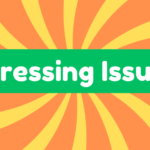The phrase "par for the course" refers to what is typical or expected in various situations, particularly when facing challenges. Its origin lies in golf, where "par" represents the standard number of strokes needed to complete a hole. Over time, it has evolved to describe mundane realities in life and work, suggesting that setbacks are normal. For example, a delay in a project might be considered par for the course. While this expression encourages acceptance of difficulty, it can also lead to complacency regarding subpar experiences. To understand its broader implications, consider how it applies in everyday scenarios.
Synonyms
In discussing the phrase "par for the course," it is beneficial to explore terms that convey similar meanings to enhance understanding. Recognizing alternative expressions adds depth to our comprehension of expected events and typical outcomes in various scenarios. Here are a few synonymous phrases:
- Business as usual – Emphasizes the regularity of activities despite challenges.
- Standard procedure – Highlights common practices that occur during typical situations.
- Normal circumstances – Acknowledges that specific outcomes are to be anticipated without surprise.
- Expected behavior – Illustrates actions that align with predictable patterns in various contexts.
Understanding these terms equips individuals with a broader perspective, enabling realistic expectations when maneuvering through the complexities of life and work. They clarify our interpretations of when certain results should be considered standard, enhancing critical thinking and adaptability.
Example of Sentences
Examples of sentences illustrate how the phrase "par for the course" can effectively convey typical experiences in various contexts. This expression adeptly summarizes everyday scenarios, highlighting the inevitability of certain situations, complete with their unexpected outcomes. For instance:
- Traffic congestion en route to work is par for the course in this city.
- Poor customer service experiences are par for the course with this company.
- Delays are expected due to the project's complexity; they are par for the course.
- Experiencing nervousness before significant presentations is par for the course.
Such expressions not only mark familiar frustrations but also hint at a broader acceptance of life's unpredictability. Understanding these outcomes can prepare individuals for the challenges they will frequently encounter, balancing realism with resilience.
Origin
The term "par for the course" has its roots in golf, where "par" refers to the standard number of strokes expected to complete a hole or round. Originally, this phrase emerged within golf history to describe anticipated performance levels. Over time, the phrase underwent evolution, extending beyond the golf course to encapsulate typical or expected outcomes in various contexts. Such applications often tackle the mundane realities of life, representing situations deemed unsurprising. It's important, however, to recognize that while the phrase implies normalcy, it might inadvertently promote acceptance of subpar experiences. Understanding its origins allows for a critical lens on how expectations shape our responses to both challenges and opportunities across diverse fields.
Collocations
Collocations associated with "par for the course" enhance the phrase's contextual understanding and application. These pairings illuminate how the phrase operates within various contexts, paving the way for effective communication.
- Performance Expectations – Referring to typical results within a specified area.
- Business Challenges – Highlighting anticipated setbacks in project management.
- Personal Experiences – Indicating common emotional responses in stressful situations.
- Market Conditions – Describing normal fluctuations in financial scenarios.
Understanding these collocations is essential for precision in usage. While they offer clarity, over-reliance on typical phrases may overlook the nuance of specific situations. Evaluating collocations usage fosters communication effectiveness, ensuring we articulate expectations without falling into ambiguity. A critical perspective on their application leads to smarter, more authentic expressions in a variety of dialogues.
How to Use in Everyday Language
Incorporating the phrase "par for the course" into everyday language can enhance communication by succinctly expressing standard expectations. This phrase can effectively punctuate everyday conversations and allows speakers to clarify what is typical in a given situation. Using it as a casual expression can signal acceptance of minor setbacks, reminding others that not every event is out of the ordinary. However, relying on such phrases can sometimes dilute the significance of negative experiences, making them seem trivial. Consequently, while it fosters understanding, it is crucial to use "par for the course" thoughtfully. Acknowledging the balance between expectations and genuine concerns can lead to more nuanced discussions in both personal and professional settings.
Why Is It Still Relevant Today?
Utilizing the phrase "par for the course" in everyday language not only facilitates clear communication but also underscores its continued relevance in today's fast-paced world. In an era marked by rapid change and unpredictability, this idiom captures our shared understanding of expected outcomes amid challenges. Its cultural relevance is evident as people navigate diverse contexts—from business environments to personal interactions—where modern adaptations of the phrase illustrate common setbacks. By acknowledging that certain difficulties are "par for the course," we gain a more realistic perspective on situations, fostering resilience. This phrase serves as a pragmatic reminder that while innovation is essential, it is equally important to manage expectations, grounding ourselves in the inevitabilities that life presents.







